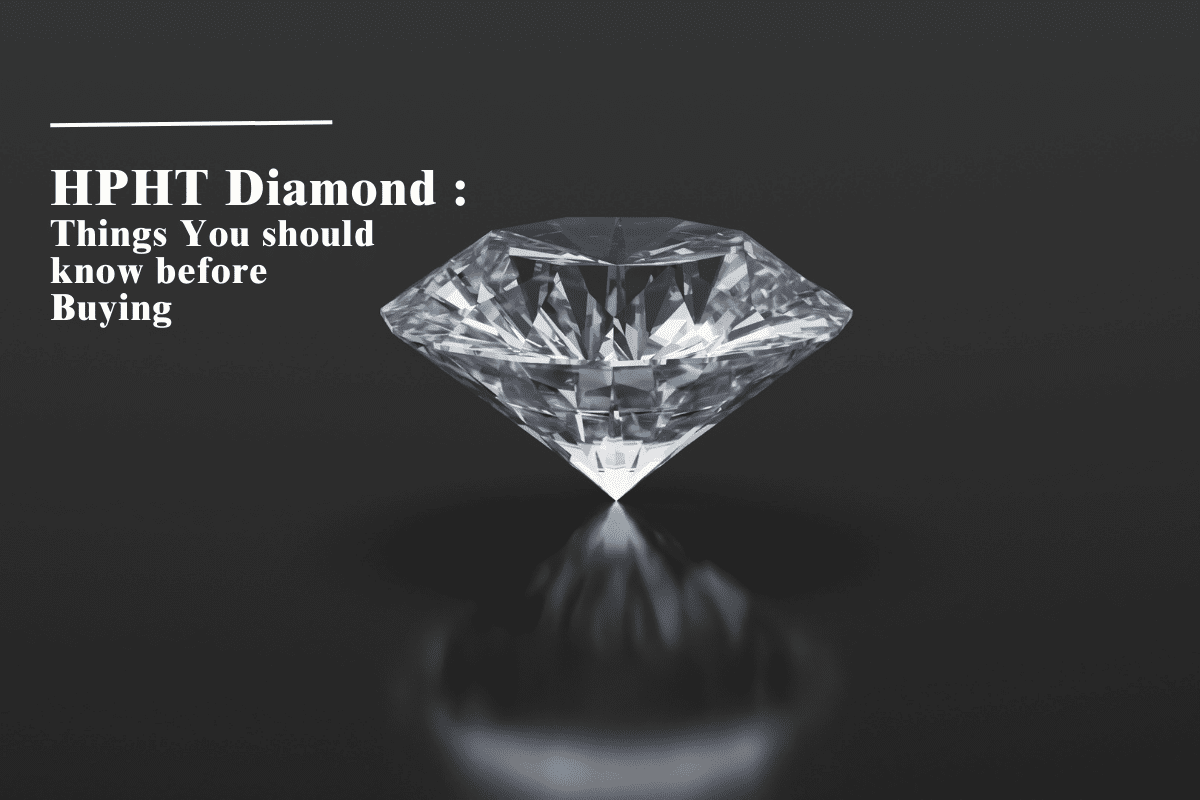HPHT Diamonds: Everything You Should Know Before Purchasing
For centuries, diamonds have been a symbol of love, luxury, and timeless beauty. However, with the advancements in technology, lab-grown diamonds such as HPHT (High Pressure High Temperature) stones are changing the jewelry industry. These stones possess the same shine as natural diamonds but with the added benefits of being ethical and cost-effective. If you are looking to buy an HPHT diamond, here is everything you need to know to make the right decision.
What Are HPHT Diamonds?
HPHT diamonds are manmade gemstones that mimic the extreme conditions under which natural diamonds form thousands of miles deep in the Earth's mantle. Using advanced technology, scientists apply 1.5 million pounds per square inch (PSI) of pressure and temperatures reaching over 2,000°C to carbon atoms, forcing them to crystalize into diamonds. What's left is a stone that is chemically, physically, and optically indistinguishable from mined diamonds—with all that at a pace of weeks instead of billions of years.
Key Takeaway: HPHT diamonds are real diamonds—not simulants like cubic zirconia. They're graded using the same 4Cs (cut, color, clarity, carat) and even experts need specialized equipment to distinguish them from natural stones.
A Brief History of HPHT Diamonds
The story of HPHT diamonds is a testament to human ingenuity:
1950s: General Electric (GE) invented the HPHT technology for producing industrial diamonds to serve for cutting tools and abrasives. These early stones were small, not of gem quality.
1970s: GE finally succeeded in successfully synthesizing the first gem-quality HPHT diamonds, although these still remained scarce and expensive.
1990s–2000s: Technology improved HPHT diamonds came in larger clearer sizes and was introduced into jewelry. De Beers launched its Lightbox Jewelry in 2018, an event that paved the way toward mainstream lab-grown diamonds today.
Today HPHT diamonds currently make up roughly 50 percent of all diamond sales, in part because consumers love them affordable and environmentally responsible.
Fun Fact: HPHT isn't only good for growing new diamonds; it's also used to deepen the color of natural diamonds. For instance, heat and pressure can transform brown-tinted diamonds into colorless or fancy-colored gems.
HPHT Diamond Properties: The 4Cs Explained
Like natural diamond, HPHT diamond are evaluated using the 4Cs. Here's how they measure up:
Color
HPHT crushes the competition when it comes to creating colorless diamonds (D-F range) and bright, vivid fancy colors like pink, blue, and yellow.
The process can eliminate nitrogen inclusions-the source of yellowish tints-for a whiter appearance.
Clarity
Most HPHT diamonds are VS2 or higher in clarity, owing to the controlled lab environment.
One negative: Tiny metallic inclusions from the growth chamber may be visible under magnification. These do not detract from brilliance but might be useful in determining the gem's source.
Carat
HPHT can produce diamonds up to 10 carats in size, but 1–3 carats are most typical in jewelry pieces.
Natural diamond are much pricier; a 2-carat HPHT diamond could be up to 70% cheaper than a mined one.
Cut
The HPHT rough diamond is cut and polished by master craftsmen to achieve brilliance. Popular cuts include round brilliant, princess, and cushion.
Pro Tip: Always request an IGI (International Gemological Institute) or GIA (Gemological Institute of America) grading report to ensure quality.
How Are HPHT Diamond Made? A Step-by-Step Guide
HPHT is a wonder of modern science:
Seed Preparation: A very small diamond seed, either from nature or from the lab, is put into a carbon environment.
Pressure Chamber: The seed is placed inside a press, which is just like the mantle of Earth—think of it as a super high-tech pressure cooker.
Extreme Conditions: The chamber heats up the carbon to 2,000–2,500°C and applies 1.5 million PSI to melt the carbon into a liquid state.
Crystallization: Carbon atoms link to the seed over some days or weeks and form a diamond crystal.
Cooling & Cutting: The rough diamond is cooled, and then it is cut and polished by some experts.
Did You Know? HPHT diamonds grow in a cuboctahedron shape, unlike the octahedral shape of natural diamonds. This helps gemologists differentiate them.
When to Choose for HPHT:
You desire a fancy-colored diamond, such as blue or pink.
You value speed and cost-effectiveness.
When to Choose for CVD:
You want a nearly flawless, colorless diamond.
You require transparency in ethics (CVD has a less complex growth process).
Is an HPHT Diamond right decision for You?
HPHT diamonds aren't for everyone, but they are ideal if you:
Want to Save Money: Lab-grown diamonds are 30–50% cheaper than natural ones. A 1-carat HPHT diamond might retail for $1,000-$3,000, versus , $1,200 - $9,000
Value Sustainability: HPHT diamonds use much less water, energy, and land than mining. They also sidestep the ethical issues of "blood diamonds."
Love Bold Colors: Fancy-colored HPHT diamonds (like vivid yellows or pinks) are less expensive than rare natural colored diamonds.
Want a Larger Stone: Stretch your budget further—opt for a 2-carat HPHT diamond instead of a 1-carat natural one.
Leranath Diamond is a good choice you can make and we are 100% sure you will never regret about it
Caveats:
HPHT diamonds have very little resale value.
Some traditionalists prefer the “romance” of natural diamonds.
5 Key Considerations Before Buying an HPHT Diamond
Certification Matters
Only buy diamonds graded by IGI or GIA. These reports confirm the stone’s lab-grown origin and quality. Avoid sellers who can’t provide certification.
Check for Color Treatments
Some HPHT diamonds are irradiated or heated post-growth to enhance color. Ask if treatments were used, as they may affect long-term stability.
Understand Resale Value
Lab-grown diamonds depreciate faster than natural ones. Consider them a purchase for personal enjoyment, not an investment.
Insure Your Diamond
Verify with your insurance company that lab-grown diamonds are included. Some providers offer lower premiums because of their low replacement cost.
Select a Reputable Seller
Seek jewelers with transparency policies. Companies such as James Allen, Brilliant Earth, and Clean Origin specialize in lab-grown diamonds and provide warranties.
Myths About HPHT Diamonds—Busted!
Myth: "Lab-grown diamonds are synthetic."Truth: HPHT diamonds have the exact same carbon make-up as mined diamonds. 100% diamond.
Myth: "They will become dull after years of use."Truth: HPHT diamonds, like mined ones, have the same hardness, a Mohs rating of 10, and won't change with good maintenance.
Myth: "Lab-grown diamonds are all identical."Truth: Every HPHT diamond has individual inclusions, like mined diamonds, so none are alike, ever.
Last Words: Worth It? - HPHT Diamonds
HPHT diamonds are a game-changer for couples, fashion enthusiasts, and eco-conscious buyers. They deliver the same beauty and durability as natural diamonds but with a smaller environmental footprint and price tag. While they may not hold sentimental value for everyone, their accessibility and innovation make them a compelling choice.
Before purchasing, weigh your priorities: If ethics, affordability, and customization matter most, an HPHT diamond could be your perfect match. Just remember to buy certified, ask questions, and—most importantly—choose a stone that speaks to your heart.
Have more questions? Share them in the comments below, and let’s keep the conversation sparkling! ????✨

